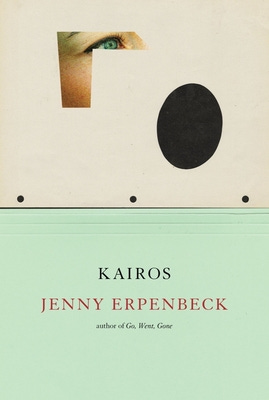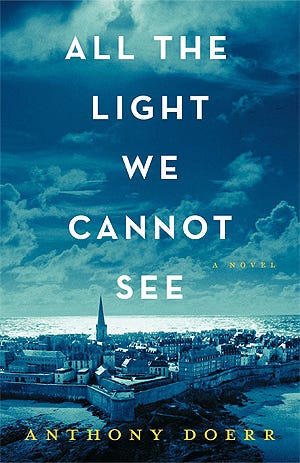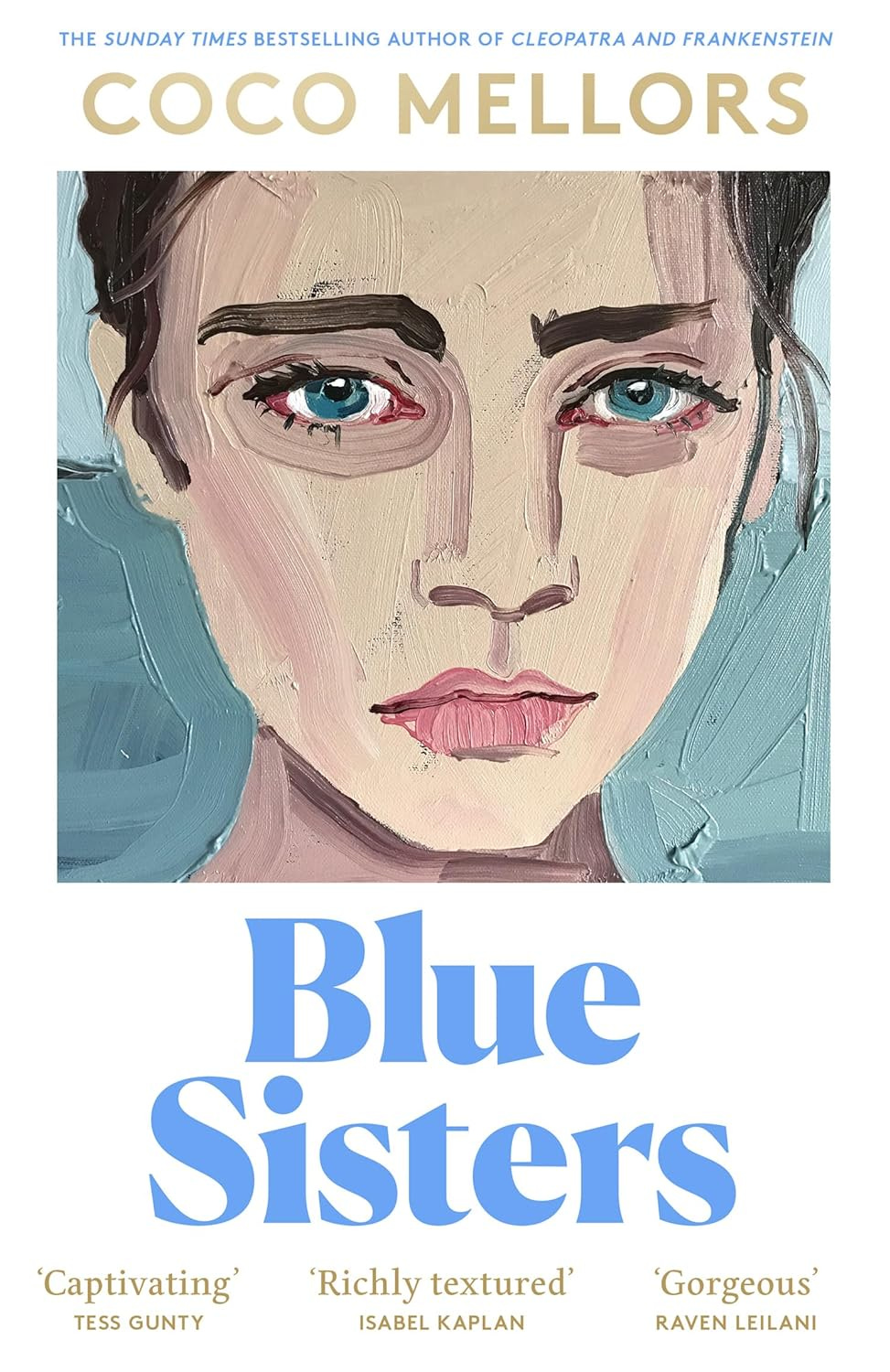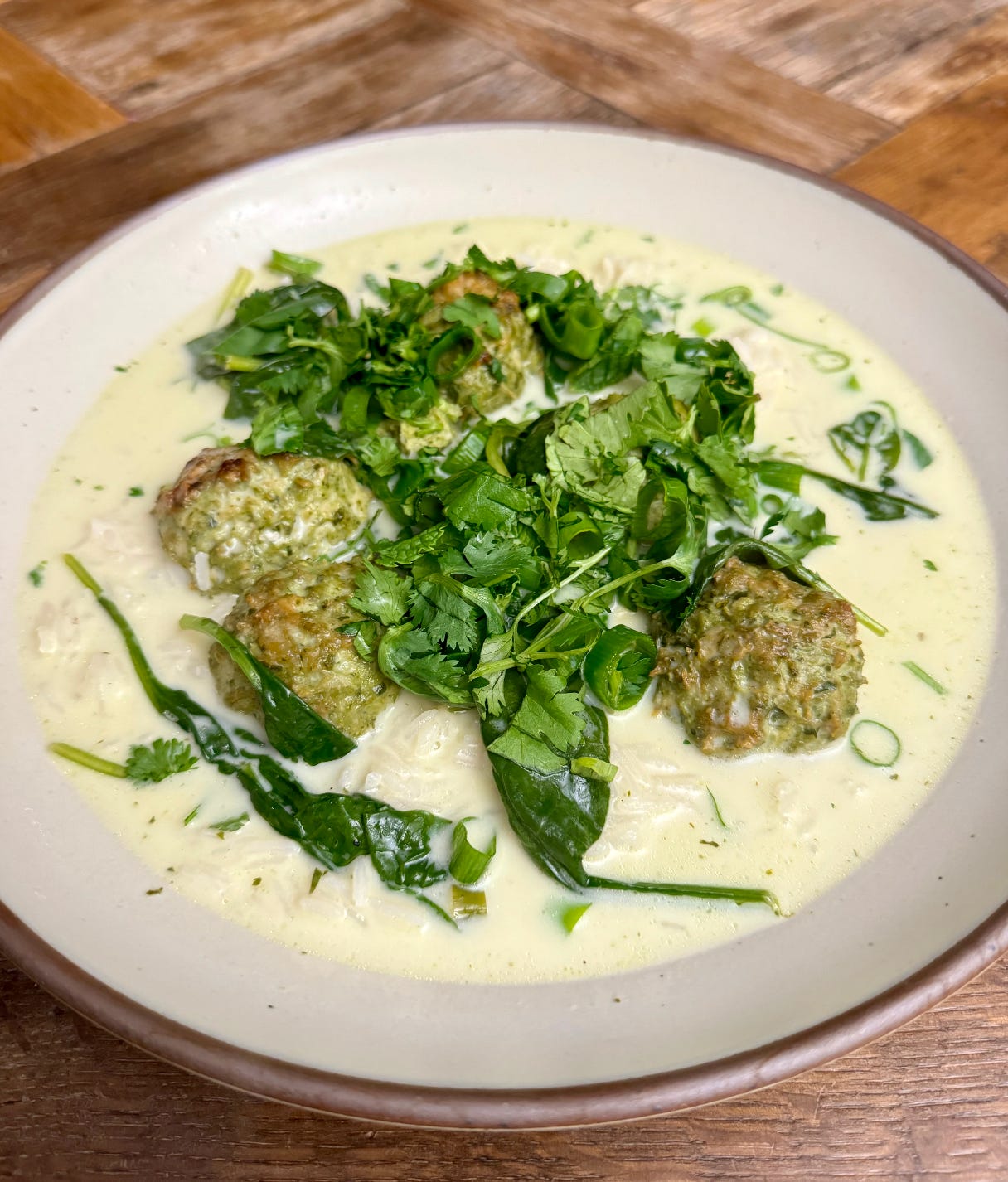Happy Friday! I read three books last week — Kairos and All the Light We Cannot See have been on my to-be-read list for a while, and Blue Sisters was just published this month. Let’s get into it.
What I read:
Kairos by Jenny Erpenbeck
Originally published in German and translated into English by Michael Hofmann, Kairos won the International Booker Prize last year. It follows a torrid, yearslong love affair in East Berlin in the late 1980s and early 1990s.
The novel opens with, “Will you come to my funeral?” A woman, Katharina, learns of the death of her former lover, Hans. Cardboard boxes of his papers are delivered to her apartment—an almost bureaucratic catalog of their love affair. (Erpenbeck divides the novel into two parts — labeled Box I and Box II).
Erpenbeck then throws the reader back to 1986 during a summer rainstorm (beginning of Box 1). Katharina, then a nineteen-year-old theater design student, and Hans, a successful published author and radio broadcaster who is married and thirty-four years her senior, meet on a bus and are immediately attracted to one another. They begin a secret affair. This meet-cute feels like a moment of Kairos, the Greek god of luck and opportunity. Katharina is “grinning almost constantly” at the beginning of their relationship.
Erpenbeck switches perspectives between Hans and Katharina throughout the novel. Their generation gap is evident at the outset. He’s old enough to have been part of the Hitler Youth as a young boy and now is on an East German pension plan. He clings to the past. Katharina has been raised in the Socialist state and is just starting her life. She is more of a blank slate. Hans acts almost like a teacher to Katharina; he fills her library with famous male writers and composers (Bach, Thomas Mann, Marx).
Their differences gradually become starker, and the relationship becomes increasingly toxic. Hans becomes more coercive and controlling — punishing her for perceived transgressions. Their sex life becomes more intense, veering into BDSM territory. Things between them get more twisted and dramatic in the novel’s second part (Box II).
Meanwhile, the East German state crumbles around them, and eventually, the wall falls. Erpenbeck follows Katharina and Hans through the early years of German reunification. The East Germans feel that West Germany has absorbed and erased their reality. We also see the power dynamics shift between Katharina and Hans, and the inertia that has held them together for so many years fades away.
Kairos is a beautiful, bleak novel with a lot going on. It is not a love story; it portrays the breakdown of a relationship and an entire political system. Erpenbeck uses Hans and Katharina as an allegory for the dissolution of East Germany. Hans’s surveillance and control of Katharina reflect that of the German Democratic Republic. Betrayals in the relationship mirror the Soviet Union’s obfuscations and lies. (This metaphor has more layers, but I will not spoil or explore them all here.)
While Katharina and Hans’s relationship is clearly doomed and unbalanced from the outset, Kairos holds your attention. A more typical book about the breakdown of a toxic relationship would probably end with “Box 1,” but Erpenbeck delves deeper here and continually subverts their dynamic.
Erpenbeck shifts more to the broader historical events at the end of Kairos. Some readers might be frustrated by this, but I loved reading about the characters’ perspectives on reunification. Katharina asks herself: “Coca-Cola has succeeded, where Marxist philosophy has failed, at uniting the proletarians of all nations under its banner. Is this home?” Erpenbeck also writes beautifully, and I could visualize East Berlin changing as I read it.
Kairos is definitely not for everyone — it’s a slower read about a toxic relationship. I personally loved it, but I happen to be incredibly interested in East Germany. This book is a rich, intimate portrait of East Germany. I also like an age-gap literary romance (I would compare this doomed relationship to modern books like Sally Rooney’s Conversations with Friends or Raven Leilani’s Luster).
Rating: 4.5/5
Genre: Historical Fiction; Literary Fiction
Page count: 314 pages
Audio: 10 hours and 25 minutes
Movie/TV pairings: The Lives of Others
All the Light We Cannot See by Anthony Doerr
All the Light We Cannot See follows the parallel lives of Marie-Laure LeBlanc and Werner Pfenning from the 1930s through World War II. Marie-Laure, blind since the age of six, grew up in Paris with her father, Daniel, the master locksmith at the Natural History Museum. When she was twelve years old, she and her father fled Nazi-occupied Paris to Saint-Malo to live with her great-uncle, Etienne. In Saint-Malo, she gets involved with the resistance and radio broadcasting.
Werner and his sister, Jutta, grew up in Zollverein, a German mining town, and are orphaned after their father died in a mining accident. Werner is later sent to a Nazi school and then to the Wehrmacht. He’s a radio expert, and the Wehrmacht sends him near the front to track down Allied and resistance radio transmissions.
There is also a subplot with a mystical diamond — Those who possess the stone will not die, but those around that person will come to misfortune.
This book is obviously incredibly popular. It won the Pulitzer Prize for Fiction in 2015 and sold over 15 million copies. While I can see why people like this, this book was not for me. The plot felt oddly slow despite the World War II context, and the characters seemed flat. It read almost like a young adult novel to me. This may make me a monster, but I was not invested in the characters and ultimately did not care when the plot turned against them.
To be fair, I might not be the right audience for All the Light We Cannot See. I read a lot of books about World War II and wars generally. Perhaps because of that, this book did not redeem (what I thought was) a lackluster plot as a historical book. I did not learn anything or gain a new perspective on WWII. I also prefer other types of war books: books with a love story as an anchor (like In Memoriam by Alice Winn), nonfiction works, and novels with more visceral depictions of war. This book felt oddly tame for WWII, even though objectively bad things did happen. Also, while this likely would not bother the average reader, random historical inaccuracies (and the fact that these French and German characters kept using modern American idioms) bothered me.
Overall, I would recommend All the Light We Cannot See to someone who really likes this type of book (readable historical fiction that’s decently fast-paced). But if you have been trying to convince yourself to read this for a while, it is probably okay to skip it.
Rating: 3.6/5
Genre: Historical Fiction
Page count: 544 pages
Audio: 16 hours and 2 minutes
Movie/TV pairings: This book was adapted into a miniseries, but the adaptation did not get great reviews from critics.
Blue Sisters by Coco Mellors
Blue Sisters is set in contemporary Paris, London, Los Angeles, and New York. Three adult sisters reunite in New York on the anniversary of their sister’s death.
The eponymous Blue sisters are all very different, but they all struggle with various addictions. Avery, 33 and the eldest sister, is a successful lawyer living in London with her wife, Chiti. Avery is sober and a recovering heroin addict. Bonnie, 31 and the second-eldest sister, is a former professional boxer working as a bouncer in Venice Beach — her “drugs of choice are sweat and violence.” Lucky, 26 and the youngest sister, is a fashion model living in Paris. “She has said the words I need a drink 132 times so far this year.” Their fourth sister, Nicky, was an English teacher living on the Upper West Side in New York and died unexpectedly of a drug overdose after struggling with chronic pain from endometriosis.
Blue Sisters is Mellors’s second book. Her first novel, Cleopatra and Frankenstein, focused on a toxic age-gap romance in New York. While she initially struggled to get that book published, it eventually became a sleeper hit. Carrie Bradshaw read a copy in an episode of the Sex and the City sequel “…And Just Like That.” Cleopatra and Frankenstein was fun and fast-paced, but I thought it was overhyped. The dialogue felt off, and the characters were somewhat cringe.
Blue Sisters is a much better book. Blue Sisters has elements of flashy celebrity life, but it is fundamentally a domestic novel. It focuses on grief, familial love, and how addiction is passed down through families. Mellors’s decision to focus on a family instead of a loosely associated group of friends and romantic partners was a smart choice. The sisters’ dynamic gives the book a lot of heart and reminds me of Little Women. “A sister is not a friend,” Mellors writes. “You don’t choose each other, and there’s no furtive period of getting to know the other. You’re part of each other, right from the start.”
This book is not perfect, though. The jokes are not always funny. Mellors uses metaphors heavily in her writing. These metaphors did not always land (mice and addicts are similar because they lack collarbones) or were needlessly descriptive (moods “sculpted the shape of her life, as waves carve cliffs of limestone rocks . . .”). I also initially found the sisters’ careers distracting, making them harder to relate to. I think Mellors was trying to create a family like the Royal Tenenbaums. But Mellors does a good job of making the sisters feel like real people with little quirks and anxieties.
I really enjoyed Blue Sisters and would easily recommend it to a friend. Genre-wise, this book felt like something between Sally Rooney’s books and complicated family books like those by Ann Patchett and Ann Napolitano.
Rating: 3.9/5
Genre: Contemporary Fiction; Messy Women
Page count: 352 Pages
Audio: 14 hours and 26 minutes (But I do not recommend this book on audio — the narrator is very distracting. My friend said, “It sounds like she is gasping for air after each line.”)
Movie/TV pairings: Little Women
Articles and podcasts I cannot stop thinking about:
My friend sent me this podcast called “How Did Goodreads Get So Bad?” from the Culture Study Podcast. The hosts have Maris Kreizman on the show to discuss her NYT article from last year. I am a Goodreads user with a small group of friends who also use the platform. I like to see what they are reading, but my friends and I do not usually post reviews on the site. If they read something I’m interested in, I will usually text them to hear their thoughts.
I use Goodreads in this limited way because it is an odd (but popular) platform. Amazon bought it years ago, but the website looks like it hasn’t been updated in ten years. Volunteer librarians upload books to Goodreads—they are not paid or employed by the company.
Goodreads has a few other problems besides a clunky website. The lack of moderation allows for “review bombing,” when trolls flood a book with one-star reviews (in extraordinary cases, Goodreads will lock the book and prevent reviews). It also suffers from the same issues as any website that forces users to rate something (taste is subjective, and sometimes, these reviews can be unnecessarily harsh).
The average numerical rating of a book on Goodreads does not matter to me that much — often, my favorite books have 3/5 stars. There are also plenty of books with very high ratings that I find to be unreadable. I realize that I numerically rate books on this Substack — I still find it to be a useful (albeit imperfect) measure of how I felt about a book. My general scale is:
🗑️🔥 This book was pretty awful, and I would not recommend it to anyone. If I own it, I would actually hesitate to put it in a free little library.
😑 I didn’t like it — not my thing, but I can see why people might like it. This book had some good moments, but I would likely give it away if I owned a physical copy.
🙂 I liked it, had a good time, and would recommend it to the right person. But I might give this book away if I owned a physical copy.
😄 I had a great time reading it and highly recommend it. They do what they set out to do for whatever genre they’re in, but there’s just something small that could have been different. I would likely reread this book and would like a physical copy.
🤯 No notes; I absolutely loved it. One of my all-time favorites. There’s something just remarkable/unique about this book. I would force my husband to read this book.
I have been trying to use The Storygraph, a new competitor platform, but I keep returning to Goodreads because that is where everyone is. I also like to track the books I have read and still like to read the more thoughtful reviews by power users. I follow some of these reviewers, so their reviews float to the top for me. But I also read plenty of reviews of books in actual publications, and I love to look at Book Marks by Lit Hub (which is sort of like Rotten Tomatoes for books — it aggregates reviews from various media outlets).
Goodreads definitely needs to be improved, or a competitor needs to take over this space, but I think the key is not to give this platform (or really any numerical rating) too much weight.
What I am cooking:
Thai-inspired meatball soup:
It is finally getting colder, so I am adding soups to our dinner rotation. I made this Thai-inspired meatball soup, which is one of my favorites. I do make some modifications: I double the garlic, ginger, coconut milk, and broth. I also broil the meatballs in the oven (as opposed to having them splatter in the pot). And I add a lot of limes at the end — at least three.









